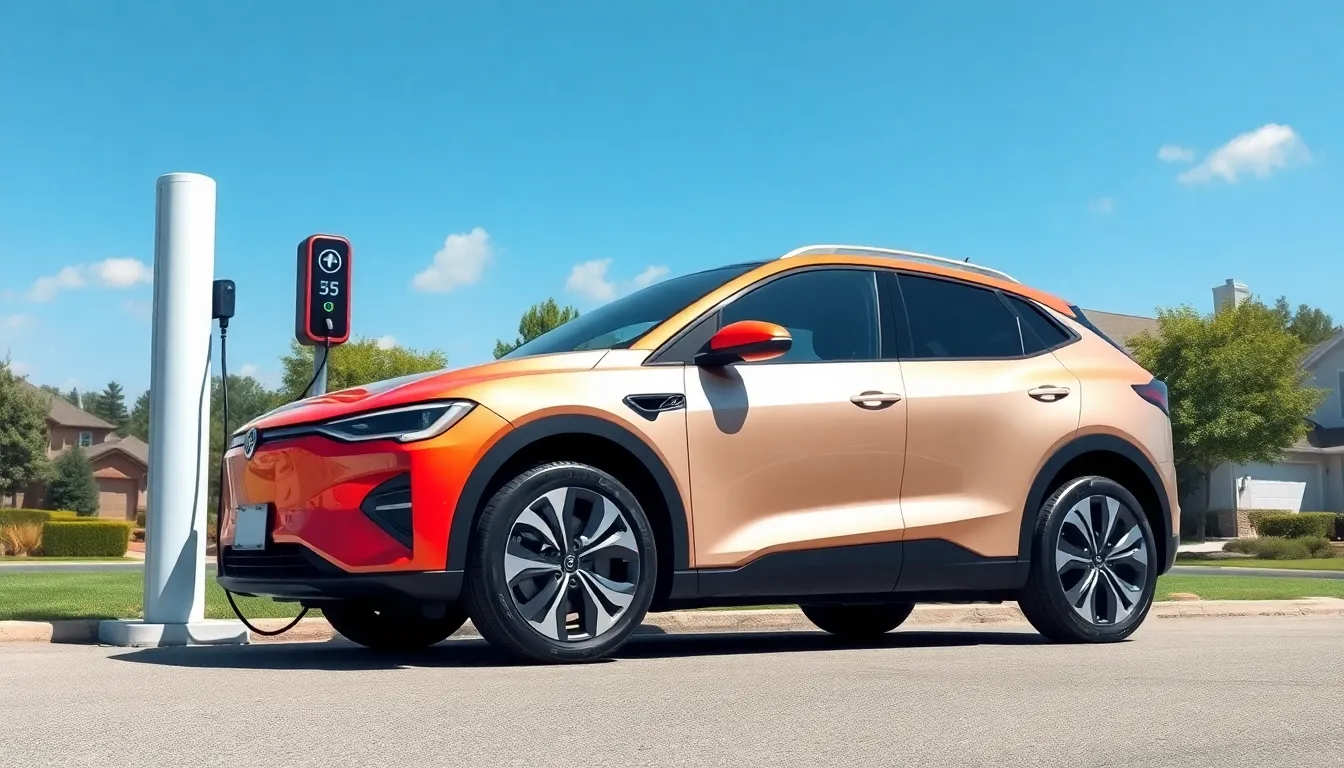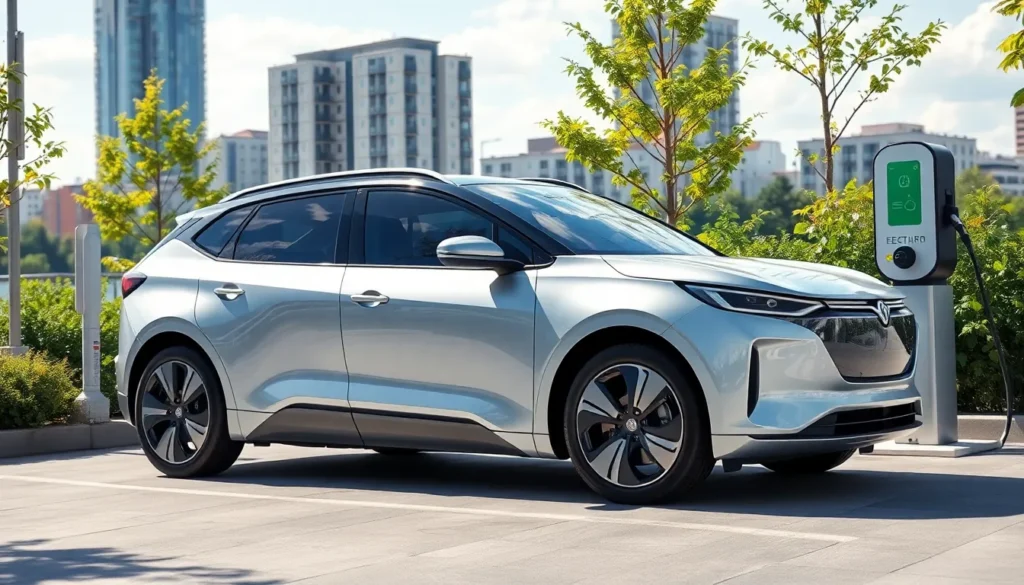Electric vehicles are taking the world by storm, and it’s not just because they’re quieter than a cat sneaking up on a mouse. These eco-friendly rides are revolutionizing how people think about transportation and the environment. But how do they actually work? Spoiler alert: it’s not magic, though it might feel like it when you zoom past gas stations without a care in the world.
Table of Contents
ToggleOverview of Electric Vehicles
Electric vehicles (EVs) represent a significant shift in modern transportation. These vehicles use electricity as their primary power source, eliminating the need for traditional fuel.
Definition of Electric Vehicles
Electric vehicles consist of any vehicle powered entirely or partially by electricity. They utilize electric motors instead of internal combustion engines. Battery technology plays a crucial role in storing energy, allowing these vehicles to operate efficiently. EVs can recharge through standard electrical outlets or dedicated charging stations. This reliance on electricity reduces greenhouse gas emissions compared to conventional vehicles reliant on gasoline or diesel.
Types of Electric Vehicles
Electric vehicles encompass several distinct types. Battery Electric Vehicles (BEVs) operate solely on electric power, offering a significant range based on battery capacity. Plug-in Hybrid Electric Vehicles (PHEVs) combine an internal combustion engine with an electric motor, providing flexibility for longer trips while still achieving improved fuel economy. Hybrid Electric Vehicles (HEVs) use both an engine and electric motor, optimizing energy use without requiring external charging. Each type offers unique benefits tailored to various driving needs and preferences.
Components of Electric Vehicles

Electric vehicles consist of several key components that work together to ensure efficient operation. Understanding these parts clarifies how EVs achieve sustainability and performance.
Battery Technology
Battery technology serves as the core of an electric vehicle’s energy storage. Lithium-ion batteries dominate the market, offering high energy density, light weight, and long cycle life. These batteries deliver power to electric motors, allowing for immediate torque and efficient acceleration. Charge times vary; many systems allow full charges in under 8 hours using standard home outlets, while fast chargers can recharge up to 80% in about 30 minutes. Battery health impacts range and efficiency, making regular maintenance crucial for longevity.
Electric Motor
The electric motor converts electrical energy into mechanical energy, enabling the vehicle to move. Electric motors provide high efficiency, offering over 90% energy conversion compared to 20-30% for internal combustion engines. Different designs exist, including AC induction and permanent magnet motors. Motors produce instant torque, allowing for smooth acceleration and responsive handling. Unlike traditional engines, electric motors require minimal maintenance, without oil changes or exhaust systems.
Charging System
The charging system facilitates the energy transfer from the grid to the vehicle’s battery. Levels of charging vary: Level 1 uses standard home outlets, Level 2 provides faster charging with dedicated stations, and Level 3 offers rapid charging capabilities. Most charging ports are compatible with multiple EV models to streamline usage. Charging times can differ based on battery capacity and charger output; generally, Level 2 chargers can recharge a vehicle overnight. Convenient charging options enhance the practicality of electric vehicles in everyday life.
How Do Electric Vehicles Work?
Electric vehicles operate through a combination of advanced technology and efficient energy usage, leveraging electric power for propulsion.
Energy Storage and Conversion
Energy storage in electric vehicles relies primarily on lithium-ion batteries, which provide high energy density. Batteries convert electrical energy into chemical energy, allowing for rapid recharging and long-range driving capabilities. Efficient energy management and regenerative braking help recapture energy during braking, maximizing battery use. Electric vehicles utilize onboard chargers to convert alternating current from the grid into direct current for battery storage. This process not only supports home charging but also fits seamlessly into public charging infrastructure.
Powertrain Functionality
Electric vehicle powertrains consist of electric motors, controllers, and the battery system. Electric motors offer remarkable efficiency, ensuring minimal energy loss compared to traditional combustion engines. Instant torque delivery enables rapid acceleration and smooth performance. Controllers play a critical role in managing the electric motor’s energy flow. Integration of advanced software optimizes performance across various driving conditions, enhancing overall driving experience. Electric vehicles eliminate many mechanical complexities found in conventional engines, resulting in reduced maintenance and fewer moving parts.
Benefits of Electric Vehicles
Electric vehicles (EVs) offer numerous benefits that enhance their appeal. Their contributions extend beyond personal convenience, impacting the environment and finances.
Environmental Impact
Electric vehicles significantly reduce greenhouse gas emissions. By operating on electricity, they produce zero tailpipe emissions, which contributes to improved air quality. The shift from fossil fuels to renewable energy sources for charging further enhances their eco-friendliness. In urban areas, widespread adoption of EVs can decrease noise pollution, promoting a more pleasant living environment. According to the U.S. Environmental Protection Agency, EVs can lower overall life cycle emissions, making them a crucial part of the fight against climate change. Communities can benefit from cleaner air and a decrease in dependence on oil, creating sustainable transportation solutions.
Cost Savings
Cost savings associated with electric vehicles are substantial. Fueling an EV typically costs less than fueling a gasoline-powered vehicle. Drivers can save between $700 and $1,200 annually on fuel costs, depending on driving habits and electricity rates. Maintenance expenses lower as well, given the fewer moving parts in an electric motor compared to internal combustion engines. Studies indicate that EV owners spend approximately 50% less on maintenance over the life of the vehicle. Additionally, various government incentives and tax credits further reduce the initial purchase price, making EVs financially attractive options for consumers. The long-term savings on fuel and maintenance appeal to budget-conscious drivers.
Electric vehicles are transforming the way people think about transportation. With their innovative technology and eco-friendly features they offer a cleaner alternative to traditional vehicles. As battery technology continues to advance EVs are becoming more efficient and accessible for everyday use. The benefits extend beyond environmental impact to include significant cost savings on fuel and maintenance.
As society shifts towards more sustainable practices electric vehicles stand at the forefront of this movement. Their ability to reduce greenhouse gas emissions and improve air quality makes them a vital part of the future of mobility. The growing infrastructure for charging and the variety of available models ensure that there’s an electric vehicle suited for everyone. Embracing this change can lead to a greener planet and a more efficient driving experience.




